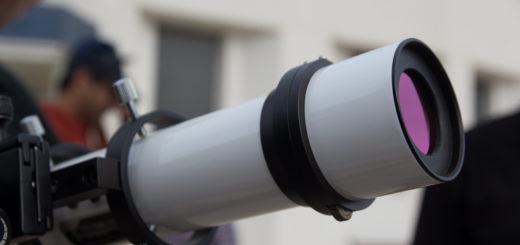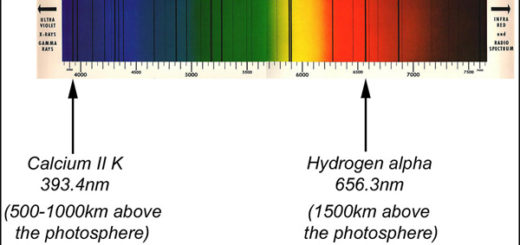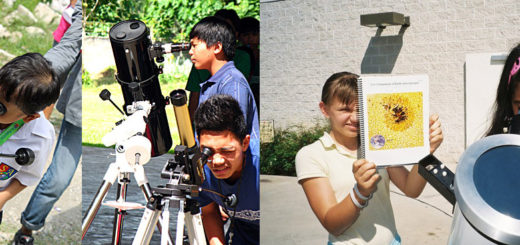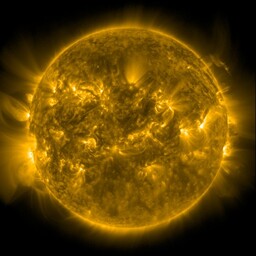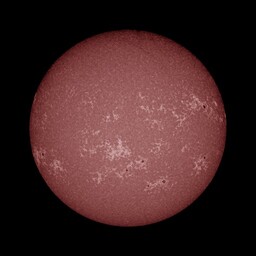What is a White Light Solar Filter?
White light filters transmit the entire visible spectrum of light but attenuate it to a level that makes observing safe. A filter designed for visual observation transmits only 0.001% of the sun’s light. Solar filters look like mirrors because so little light is passing through them.
White light filters allow the photosphere of the sun to be observed. The photosphere is the “surface” of the sun (inasmuch as a ball of gas has a surface). It is the layer of the sun that generates most of the light and is therefore easiest to see. This is also where sunspots occur, so these features are easily observed with white light filters. Events such as partial and total solar eclipses and planetary transits are most often observed with white light filters. In addition to sunspots, granulation (texture) on the surface of the sun can be seen. However, solar prominences may not be observed with a white light filter and require the use of a hydrogen-alpha filter.
White light filters are made either from glass coated with metallic layers, or are made from thin sheets of film such as Mylar or similar material. The glass filters are often considered the safest option for sharing views of the sun with groups of people, since it is hard to damage the glass filter while in use. It is possible to tear a film-type filter, although you would have to try pretty hard to do it. On the other hand, dropping a glass filter will likely shatter it, while a film filter would most likely be unharmed. The best quality filter currently available (2006) is made from a film material called Baader Astro Solar Film.
Most filters provide a white image of the sun, while some give a yellow-orange color. Mylar filters give a slight bluish color, but the Baader film (which is similar to Mylar in physical appearance) gives a pure white image. Observers sometimes use an orange colored filter to make the sun look the color people expect to see, but the image quality is fine no matter the color.
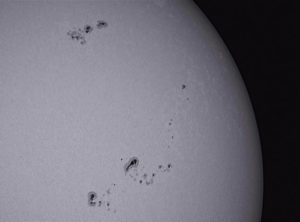
Sun through a White Light Filter

